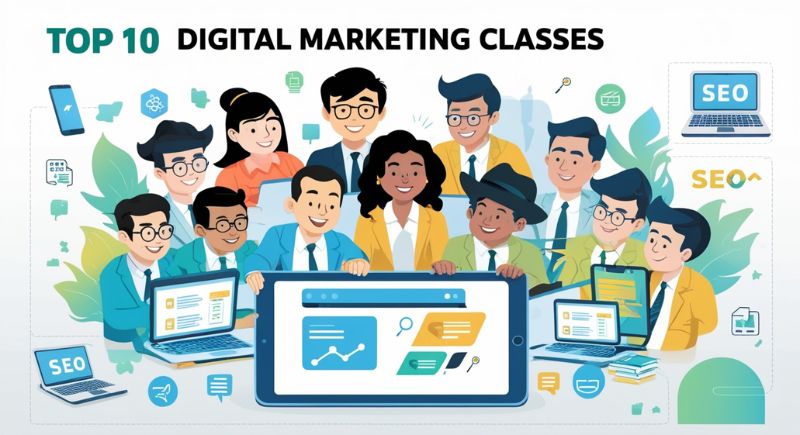Importance Of Mobile Marketing

What Is The Importance Of Mobile Marketing?
Mobile marketing is a type of digital marketing that is used to reach potential customers on their mobile devices. It is a form of direct marketing that allows companies to send messages, advertisements, offers, and other content directly to customers’ mobile devices. It can also be used to drive customers to websites, apps, and other digital properties. Mobile marketing can be used for anything from increasing engagement to driving sales.
Mobile Marketing Enables Businesses To Communicate With And Reach Out To Their Clients Via Mobile Channels.
Mobile messaging is a form of communication that allows companies to build relationships with their customers and target audiences. It provides a direct and personal line of communication that customers can use to engage with a company. Mobile marketing can also deliver timely messages, such as promotions or product updates, to customers. By leveraging mobile technology, companies can reach out to customers in a timely and convenient manner
Key Takeaways
1. Developing a good understanding of the customer and their needs is essential for any business looking to create a successful product or service.
2. It is important to get feedback from customers and use it to develop a product or service that meets their needs.
3. By understanding the customer’s pain points, businesses can develop solutions that are tailored to their needs.
4. In order to build a successful product or service, businesses must focus on creating a positive user experience and providing value to customers.
5. Keeping up with customer trends and staying ahead of the competition is essential to ensure that the market well receives the product or service.
What Is A Mobile-First Strategy?
A mobile-first strategy is an approach to web design and development that prioritizes the design and layout of a website for mobile devices first, before adapting it for larger screens. This approach is becoming increasingly popular as more people browse the web on their smartphones, and it emphasizes the need for a website to be responsive and optimized for mobile devices.
What Is Mobile-First Indexing?
Mobile-first indexing is a process that Google uses to rank websites on its search engine results pages (SERPs). When Google indexes a website, it looks at the mobile version of the website first, and then the desktop version. This means that websites need to have a mobile-friendly version in order to be indexed properly. As more and more users are using mobile devices to access the internet, mobile-first indexing has become increasingly important for SEO (search engine optimization).
What Is A Mobile Conversion Rate?
A mobile conversion rate is the percentage of mobile visitors to a website who take a desired action, such as making a purchase, signing up for a newsletter, or downloading an app. It measures how well the mobile experience of a website is converting visitors into customers or other desired outcomes.
What Is The Business Value Of Mobile Marketing?
Mobile marketing can provide businesses with a number of key benefits, including increased sales, better customer engagement, improved brand recognition, and higher ROI. Mobile marketing can help businesses reach new customers, build relationships with existing customers, and increase customer loyalty.
Additionally, mobile marketing can help businesses reduce costs and drive more conversions.
Finally, mobile marketing can help businesses take advantage of new technologies and trends, such as location-based marketing and mobile commerce.
What Steps Must A Company Take To Start Implementing A Mobile Marketing Strategy?
1. Define goals and objectives: Establish your mobile marketing strategy’s purpose and desired outcomes.
2. Analyze your target market: Conduct research to gain insights into the needs, behaviors, and preferences of your target market.
3. Develop a mobile-friendly website: Ensure your website is optimized for mobile devices and offers a great user experience.
4. Leverage mobile advertising: Use mobile-specific ad networks to reach your target audience via apps, websites, and other mobile platforms.
5. Create compelling content: Develop content that is tailored to the needs of mobile users, including videos, images, and text.
6. Utilize geo-targeting: Take advantage of geo-targeting technologies to deliver relevant, personalized messages to users based on their location.
What Technology Is Necessary For Mobile Marketing?
Mobile devices, such as smartphones and tablets, are necessary for mobile marketing.
A mobile platform, such as Android, iOS, or Windows Phone, is needed to create and deliver mobile marketing messages.
Mobile applications, such as apps or websites, can be used to reach customers and engage them with content and promotions.
Analytics tools: Analytics tools can be used to measure the effectiveness of mobile marketing campaigns.
Location-based services: Location-based services, such as GPS tracking, can target customers based on their location and deliver personalized messages.
Social media: Social media platforms, such as Facebook and Twitter, can be used to communicate with customers and spread the word about promotions.
What Are Common Goals Companies Hope To Achieve With Mobile Marketing?
1. Increase Brand Awareness: Mobile marketing can help companies create brand recognition, visibility, and loyalty.
2. Reach a Wider Audience: Mobile devices have become an integral part of people’s lives. By leveraging, companies can target a wider range of potential customers.
3. Boost Your Website Traffic with Mobile Marketing: Employing mobile marketing strategies can actively increase the number of visitors to your company’s website, ultimately resulting in higher sales potential.
4. Increase Customer Engagement: Companies can use mobile marketing to engage with customers and increase loyalty.
5. Generate Leads: Active mobile marketing can effectively generate leads and convert them into sales.
6. Increase Sales: By targeting customers on their mobile devices, companies can increase sales by making it easier for customers to purchase products and services.
What Mistakes Do Companies Sometimes Make With Mobile Marketing, And How Can They Avoid Them?
1. Not Having A Mobile-Friendly Website: Companies This means that the website should be easy to navigate, have a fast loading, and feature a responsive design.
2. Not Leveraging Location-Based Marketing: Companies should take advantage of GPS technology to target customers based on their location. This can be done through geotargeted ads, location-based promotions, and more.
3. Not Testing For Compatibility: Companies should test their mobile campaigns across all devices and platforms to ensure that they’re functioning properly. This includes making sure that the content and visuals are optimized for different sizes and screens.
4. Not Tracking Results: Companies should track the performance of their mobile campaigns to determine what’s working and what’s not. This will help them optimize their campaigns and better target their customers.
5. Not Personalizing Messages: Companies should personalize their messages and campaigns based on the customer’s interests and preferences. This will help ensure that the customer receives relevant and interesting content.
What Are Some Mobile Marketing Best Practices?
1. To effectively reach your audience through mobile, it’s crucial to tailor your approach to their interests, habits, and demographics. This means using strategies and techniques that specifically target your active audience
2. Get Creative With Content: Keep content fresh and interesting, and use images, videos, and quizzes to engage customers.
3. Make It Easy To Take Action: Keep the call-to-action (CTA) visible and easy to understand, and ensure that the process is as seamless and frictionless as possible.
4. Optimize For Mobile: Design campaigns with mobile in mind, optimize campaigns to fit the size of the device, and ensure that all content is viewable on mobile.
5. Track And Measure: Track performance to measure your return on investment (ROI). Use analytics to understand customer behavior and make tweaks to optimize campaigns.
6. Personalize: Use personalization to make campaigns more relevant to customers, and use data to create segmented campaigns.
7. Leverage location: Location-based marketing can be a powerful way to reach customers in a specific area.
8. Take Advantage: of automation: Automation can save time and money, and it can help you create personalized campaigns.









